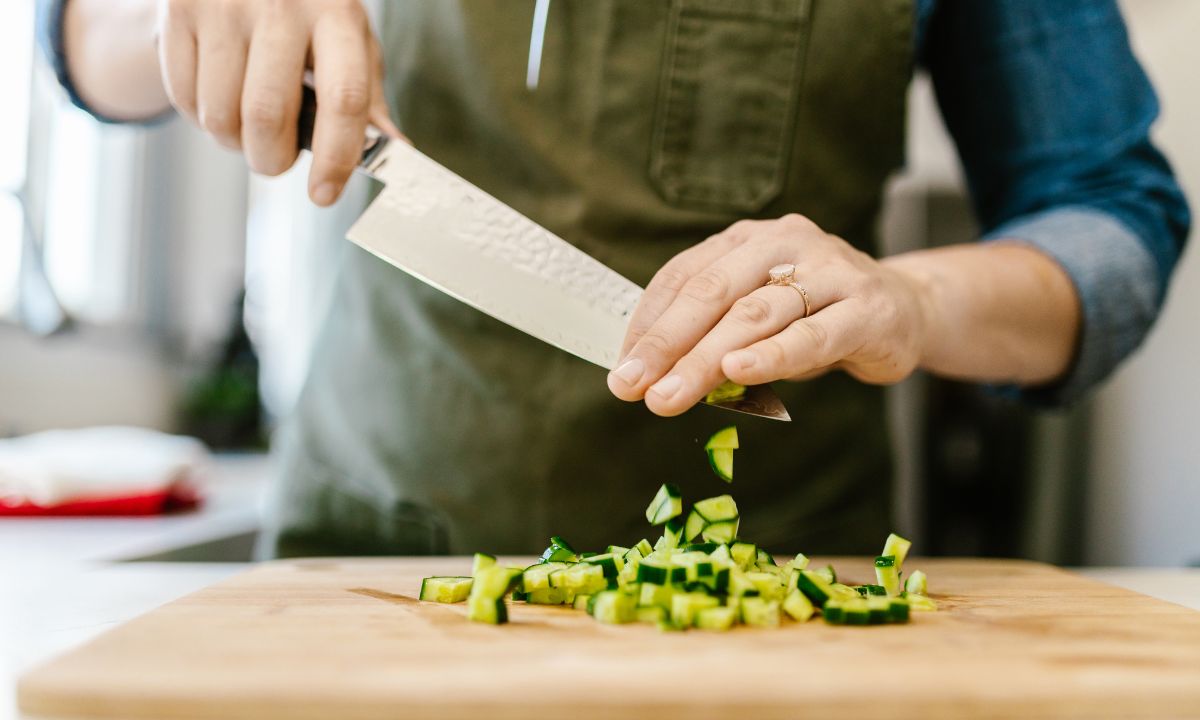In today’s world of culinary art, possessing advanced knife skills is essential for anyone looking to elevate their cooking. Mastering the art of knife handling can make a significant difference in the quality and presentation of your dishes. In this article, we’ll explore why knife skills matter, how to choose the right knife, essential techniques, and how to maintain your knives.
Why Knife Skills Matter in the Kitchen
Speed and Efficiency
Developing advanced knife skills allows you to work more quickly and efficiently in the kitchen. Chopping, slicing, and dicing ingredients with ease can save you valuable time, allowing you to focus on other aspects of your meal preparation. Moreover, consistent knife work helps ensure even cooking and better flavors.
Precision and Presentation
Advanced knife skills also contribute to the overall presentation of your dishes. Precisely cut ingredients can make a dish look more visually appealing and appetizing. A well-plated dish, with beautiful knife cuts, can make a lasting impression on your guests or customers.
Safety
Proper knife handling is essential for ensuring safety in the kitchen. With advanced knife skills, you’re less likely to experience accidents or injuries, as you’ll have better control and confidence in handling sharp tools.
Choosing the Right Knife
Chef’s Knife
A chef’s knife is a versatile tool that should be part of every home cook’s arsenal. Ranging in size from 6 to 12 inches, a chef’s knife can perform a variety of tasks, such as chopping, slicing, and dicing. Look for a well-balanced, comfortable-to-hold knife with a sturdy blade.
Paring Knife
A paring knife, with its small and sharp blade, is ideal for precision tasks such as peeling, trimming, and making intricate cuts. It’s perfect for working with smaller ingredients like fruits and vegetables.
Bread Knife
A bread knife, with its serrated edge, is designed for cutting through crusty bread and delicate pastries without crushing them. The serrated edge allows for clean, precise cuts through a variety of textures.
Mastering Essential Knife Techniques
The Claw Grip
The claw grip is a fundamental technique that helps protect your fingers and improve control when using a knife. Curl your fingers under, tucking the fingertips away from the blade, and grip the ingredient with your knuckles as a guide. This allows for safer and more accurate cutting.
Chopping
Chopping is the most basic knife skill, which involves cutting ingredients into small, uniform pieces. Place the tip of the knife on the cutting board, rocking the blade up and down while keeping the tip in contact with the surface. Maintain a steady rhythm to ensure even chopping.
Slicing
Slicing involves cutting ingredients into thin, even pieces. Hold the knife with a secure grip and use a gentle sawing motion to cut through the ingredient. This technique is ideal for cutting meat, fish, and vegetables.
Mincing
Mincing is the process of cutting ingredients into very small, fine pieces. With a chef’s knife, use a rocking motion to cut the ingredient, moving the knife back and forth while occasionally scraping the pieces together to maintain uniformity.
Julienne
Julienning is a technique used to cut ingredients into thin, matchstick-like strips. First, cut the ingredient into even slices, then stack the slices and cut them lengthwise into thin strips. This technique is commonly used for vegetables like carrots and bell peppers.
Chiffonade
Chiffonading is a technique used to cut herbs and leafy greens into thin, ribbon-like strips. Stack the leaves, roll them tightly, and then slice them thinly using a gentle sawing motion. This technique is perfect for garnishing dishes with herbs like basil or mint.
Maintaining Your Knives
Honing
Honing is the process of realigning the edge of your knife to maintain its sharpness. Using a honing rod, hold the knife at a 20-degree angle and gently swipe the blade along the rod, alternating sides. Honing should be done regularly to keep your knives in top condition.
Sharpening
Sharpening is the process of removing material from the blade to create a new, sharp edge. This can be done using a whetstone, an electric sharpener, or a manual sharpener. Sharpen your knives as needed, depending on the frequency of use and the type of blade.
Conclusion
Elevating your cooking with advanced knife skills is a rewarding endeavor that can transform your dishes and enhance your overall culinary experience. By understanding the importance of knife skills, choosing the right tools, mastering essential techniques, and properly maintaining your knives, you’ll be well on your way to creating stunning, delicious meals.
FAQs
1. How long does it take to develop advanced knife skills?
The time it takes to develop advanced knife skills varies depending on the individual’s dedication and practice. Regular practice and focusing on proper techniques can help you improve more quickly.
2. How do I know when it’s time to sharpen my knives?
If your knife struggles to cut through ingredients, feels dull, or requires more force than usual, it’s likely time to sharpen it. A sharp knife should easily slice through a tomato or a sheet of paper.
3. Can I use a chef’s knife for all my cutting needs?
While a chef’s knife is versatile, it’s essential to use the right knife for specific tasks. For example, using a bread knife for slicing bread will result in cleaner cuts and less damage to the loaf.
4. How can I practice my knife skills safely?
Practice with a dull knife or a dedicated practice knife to minimize the risk of injury. Focus on proper techniques and build your confidence before transitioning to a sharp knife.
5. What’s the best way to clean and store my knives?
Hand-washing your knives with warm, soapy water and drying them immediately is recommended. Store them in a knife block, on a magnetic strip, or in a protective sheath to prevent damage and ensure safety.

